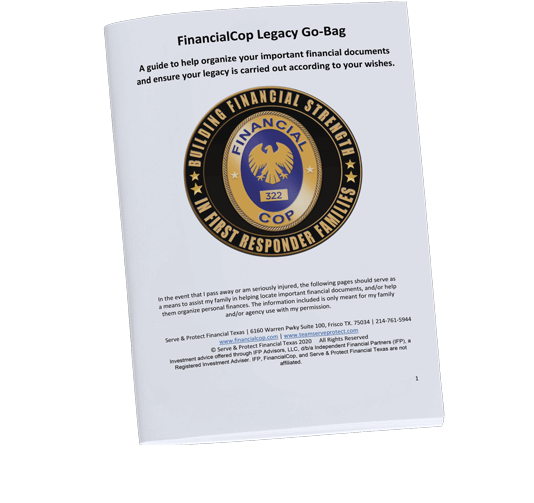Whether decades away or right around the corner, make the most of your retirement with the right plan.
Retirement! The day we spend our entire career looking forward to. Did you save enough for this day? Are you utilizing all of the supplemental accounts available to you to supercharge your retirement savings? How does your pension play into all of this?
Once you’re debt-free and have a fully-funded emergency fund of at least 3-6 months worth of living expenses we suggest you consider contributing 15% of your gross income towards all of your retirement accounts. Take the percentage being taken out for your pension and subtract that from 15% to determine how much more you should consider contributing to an IRA and/or your 457/403b/401k. If your pension contributions are over 15%, consider contributing to one of these accounts to ensure you have some secondary retirement savings occurring. Not sure what amount you should be doing?
Always try to contribute a percentage to your accounts and not just a dollar amount. Why? Because when you get a raise from your employer your retirement account gets a raise by that same percentage. If you just do a flat dollar amount then you have to remember to go back every time you get a raise to up your contributions and it can be tough to remember to do this because life keeps us busy and we can forget about these kinds of things.
So now we know we likely should look at utilizing some secondary retirement account planning. Lets learn about how retirement accounts work.
How does Uncle Sam get his hands on his portion of our retirement accounts when it comes to taxes? This is an essential topic to understand as you decide how to pick the right retirement accounts.
Let’s start to look at our retirement accounts from a tax “coat” perspective. Does your retirement account have the coat on it that requires you to pay taxes as you pull retirement funds out or the coat that has no taxes pulled out as you pull money out?
The first type of coat your retirement account can have is called the pre tax account. Money you put in is not taxed today, but when you start to take money out of the account you are taxed on not only what you contributed, but also the growth of that account. Think of it as not paying taxes on contributions you make now, but taxes on the account to pay later. You are lowering your taxable income now, but later when you take this money out you are going to pay taxes on all of it, what you put in as well as what the growth was. These types of accounts include traditional IRA’s, pension accounts, 457, 403b’s, and 401k’s.
The second type of tax coat is the after tax coat—a ROTH account. Think of an after tax coat as the opposite of a pre tax coat. In an after tax coat you pay taxes on contributions you make today, but you will not pay taxes on the account as you withdraw it in retirement. That means when you go to take money out at retirement you don’t pay taxes again on it, including the growth that has come from it, as long as it has met the guidelines below. These types of accounts include ROTH IRA’s (subject to income limitations based on IRS rules), ROTH 457, ROTH 403b, and ROTH 401k plans. So, what are those guidelines to make sure it is tax-free:
Again, always refer to the IRS in case these rules have changed. On another note when it comes to IRA’s if you take out money prior to the age of 59 ½ the IRS is going to hit you with a 10% early withdrawal penalty on top of your ordinary income tax unless you meet very specific rules outlined by the IRS. These are retirement accounts so your mindset should be the money going into these accounts should be used for retirement.
Here is an example.
Officer #1 contributes the current 2020 max of $6,000 annually by contributing $500 monthly into a traditional IRA and Officer # 2 contributes the same amount but does so in a ROTH IRA account. Let’s assume they are 30 years old. If they maintain that contribution rate, and they get an assumed 10% rate of return over that 30-year time period they both contributed approx. $180,000, but their accounts are worth approx. $1,140,162 million (approx. $959,662 in growth). That is the potential power of time, also known as compounding interest.*
Check out our blog to read more about what’s the difference between a 401k & an IRA?
*Examples are for illustrative purposes only. Disclaimer – For more information about any of these retirement plans always refer to the one and only www.irs.gov for the most up to date rules and definitions.

Making healthy financial choices is essential to building a strong financial future. Our Legacy Go-Bag makes organizing and keeping track of your finances easy. A Legacy Go-Bag creates an organized place to have all important personal information and instructions to help your family locate items related to your personal finances and final wishes. A Legacy Go-Bag will help give them specific instructions, from you, about how you want things to occur in the event that you pass away or are seriously injured.
Organize your finances with the Legacy Go-Bag Worksheet.